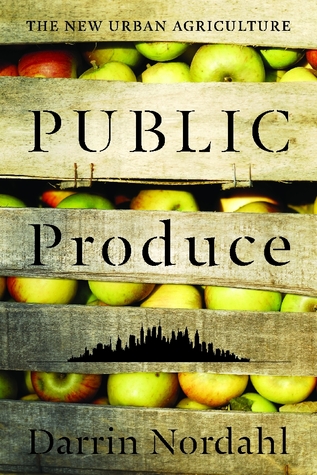At the end of the street from my childhood home in California lies an undeveloped field. When I was growing up, there used to be a couple horses who grazed it, but nowadays the horses are long gone and the field has been given over to weeds. Chief among which are wild mustard plants.

And when the mustard is going full force, my mom will report on how many people she sees milling around in the field, harvesting free food. They're all Asian folks (probably Chinese) for two reasons (and I speak as a Chinese-American): (1) Chinese enjoy mustard greens in a stir-fry; and, (2) Chinese adore saving money.
Don't ask me why, but it took me until recently to make the not-very-advanced brain connection that many of the plants we pay good money to eat happen to grow in the wild. Or, at least, in the free. I was reminded of this helpful fact again when I recently read

Author Nordahl advocates for unused city land to be planted with edibles and cites many exciting examples of cities doing just that, thus getting citizens excited about gardening, making use of dead space, fighting the "food desert" problem, and supplying local food banks with fresh, ripe, seasonal produce.
Now, Bellevue hardly counts as a food desert, as we are spoiled with access to not only local-ish foods, but, in our grocery stores, to food from across the globe, but it's still true that those foods are pretty pricey and that not every citizen of Bellevue reaches first for the fruit and vegetables and second for the Chick-Fil-A and Wendy's. As Nordahl points out, processed and fast food offer the most calorie bang for the buck. It takes a lot of carrot sticks to make you feel as full as one Quarter Pounder. Wouldn't it be lovely if more of the easily accessed public landscaping were edible? All planted alongside "Eat Me When I Look Like This" signs? If a thousand objections immediately rose to your mind, including things like maintenance, liability, etc., you may want to read Public Produce for Nordahl's rebuttals. I was more interested in visions of free food gracing our community, like the tiny strawberries that landscape our summer pool. I'm pretty sure I'm the only pool member who actually picks and eats the four or so berries per year, but it's worth pointing out that the strawberry plants get as little TLC as other plants at the pool and that I haven't died yet from eating them.
Did you realize that fruit tree branches that overhang public access areas are fair game? That some towns and cities have online maps you can consult, to walk around and pick all sorts of free produce? Greedily I checked if there were such a map for Bellevue, but alas, only a few (private) fruit trees are listed on one site, along with the blackberries we all know from our own thorny wrestling matches in the backyard. Sigh. But weeds do grow like...weeds...in Bellevue, especially in the spring, so a future mission I've assigned myself is to investigate some foraging books and report back.
Here are the two on the shelf:

and

The last foraging book I had was black-and-white with hand-drawn illustrations. I don't know about you, but I wasn't willing to go out and about, stuffing things in my mouth based on my best guesses. I'll keep you posted on my findings.
All of which is to say, if you're considering putting in new landscaping this year, think about making it edible! In these days of social media, you don't have to worry about harvest going to waste, if you let people know about it.
Just one last word of wisdom: none of what I've said applies to zucchini. Don't plant zucchini. No one wants your zucchini. No one can even keep up with their own zucchini. Zucchini = NO.




